Enjoy a twist on a classic with this Chocolate Pavlova recipe with a crispy meringue base, soft chocolate souffle center, a chocolate cream filling all finished with fresh summer fruits. This is made exactly like a standard Pavlova, but the result is a dense meringue that is idea to serve those with gluten intolerances.

Table of Contents
Ingredients and substitutions for Chocolate Pavlova
- Egg whites: The egg whites should be room temperature, as they allow for better aeration at room temperature resulting in a more fluffier meringue and more solid pavlova.
- Vinegar: This adds acidity to our egg whites to provide stability and act as an insurance to ensure your pavlova doesn't deflate.
- Sugar: As a result of using superfine or caster sugar, the nice fine granules dissolve into our meringue and add sweetness without adding additional flavors to the pavlova.
- Cocoa Powder: The star ingredient here so you’ll want a nice high quality cocoa powder for a truly chocolate packed flavor. I do not recommend substituting melted chocolate in equal measure as it hasn't been tested and the density might affect the way the pavlova bakes resulting in a failed meringue.
- Fresh fruit: So the reason for fresh cherries and strawberries with this pavlova is because strawberries compliment chocolate so beautifully and cherries add a tartness to balance the flavors. Raspberries, blackberries or blueberries would all work beautifully here.
See recipe card for quantities.
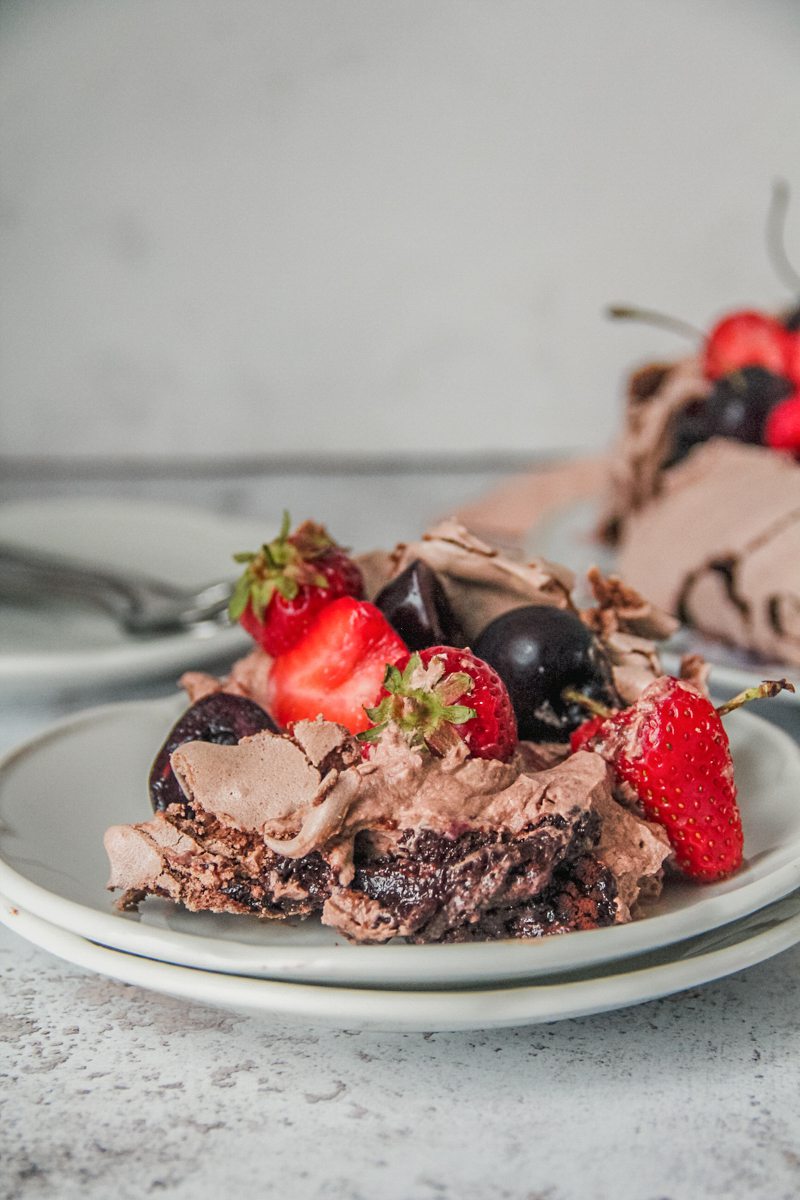
How to make Chocolate Pavlova:
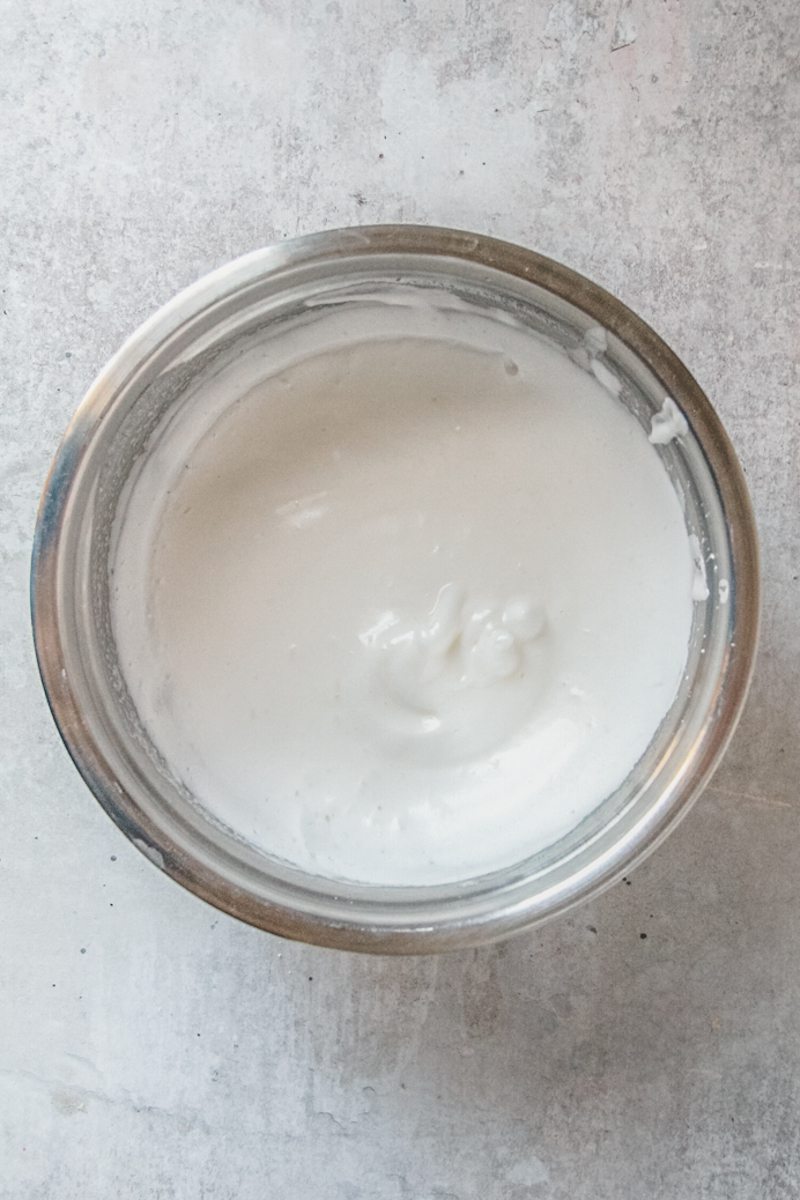
Step 1: Whip it: Whip the sugar, boiling water, vinegar, vanilla extract and egg whites in a clean bowl until stiff.
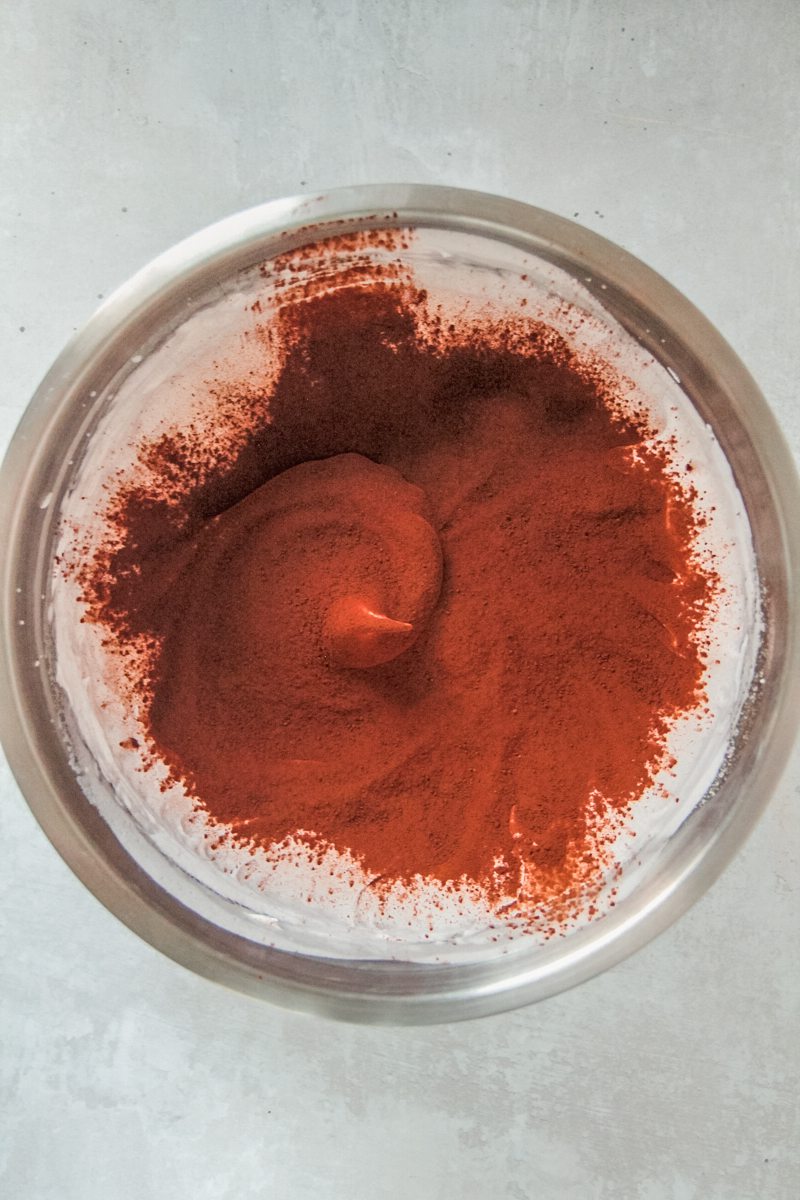
Step 2: Cocoa: Sift in the cocoa powder and fold in carefully until combined.
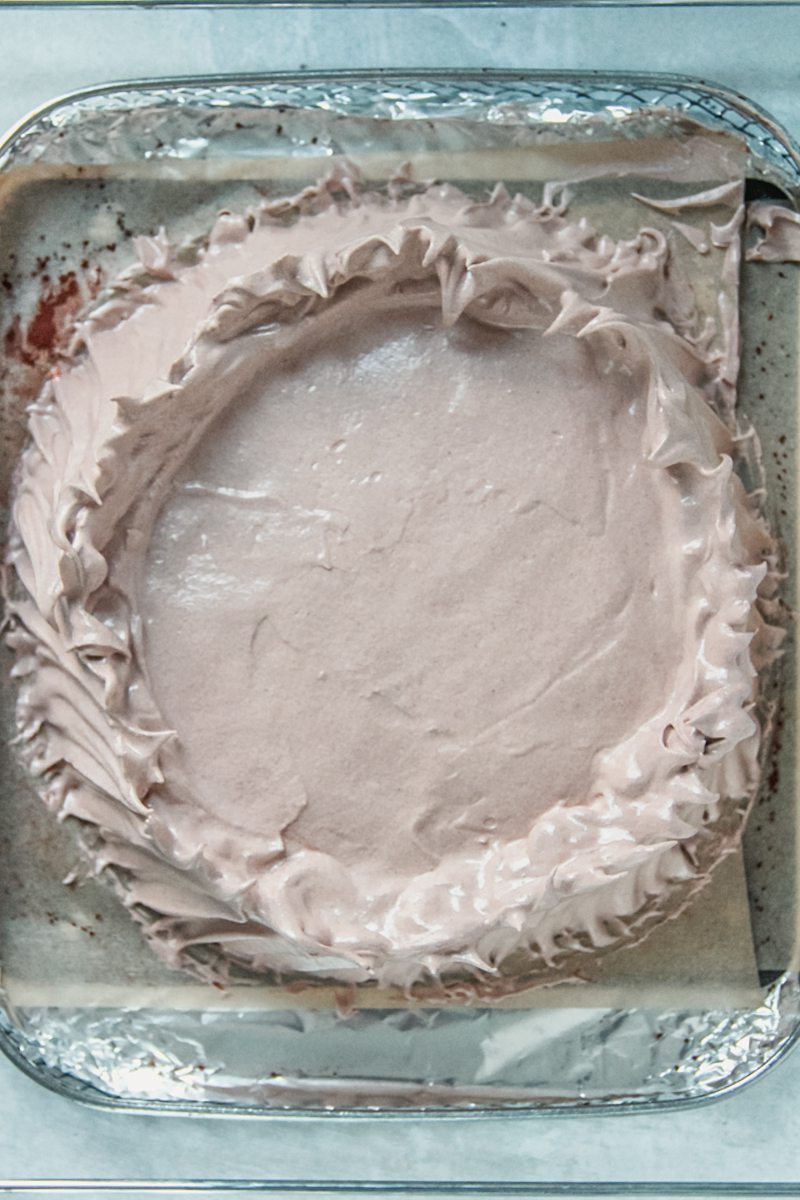
Step 3: Spoon and shape: Spoon onto a lined tray and shape carefully into whichever pavlova shape you prefer with an offset spatula or the back of a spoon.
Step 4: Bake: For 30 minutes before lowering the temperature and baking a further 30 minutes. Allow to cool completely in the oven.
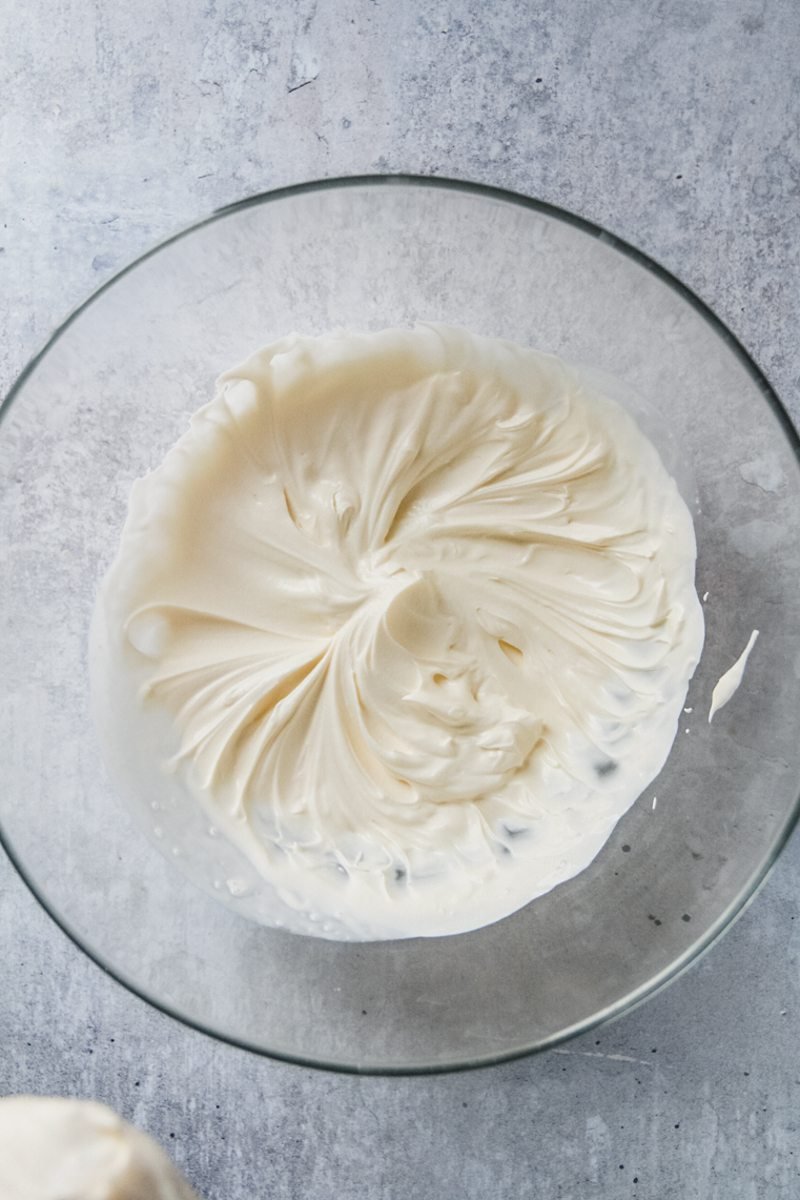
Step 5: Whip: The cream until soft peaks just form than fold in the cocoa powder.
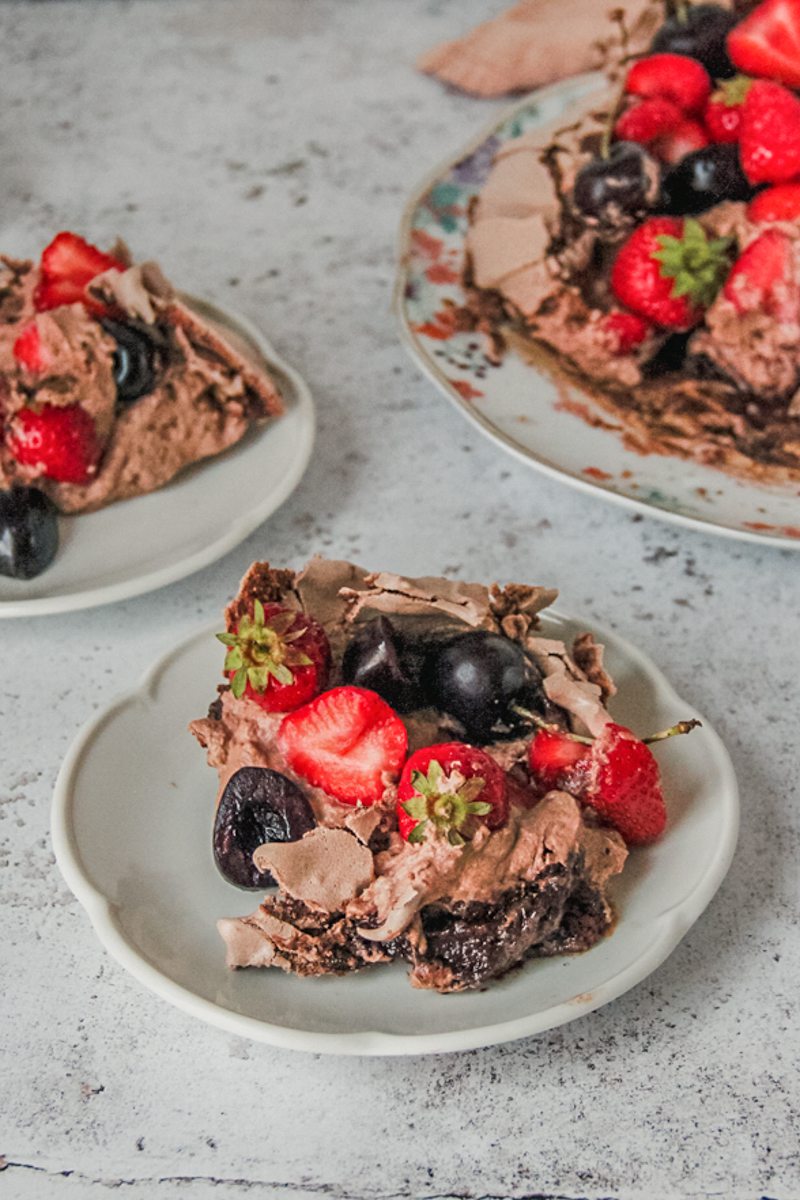
Step 5: Finish: Top swoops of the chocolate whipped cream and fruit. Dig in!
FAQ's for the best Chocolate Pavlova
Yes! Room temperature egg whites absorb air more quickly to develop a nice and stable foam. Though to really stabilize that foam we’ll need an acidic element (the vinegar we use here).
The best result in a stable but volumized meringue is to whip it at a low, but medium speed of around 3 (depending on your beaters). This will result in introducing enough air to expand the egg whites without over whipping when you begin to introduce your sugar.
Yes you can! Over whipping egg whites can result in your meringue collapsing or weeping beads of sugar once baked. Try not to beat for longer than 15 minutes (this is around the break point, I’ve noticed). Unfortunately, you cannot repair over whipped meringue, though, dependent on how over whipped they are, you could make an egg white based recipe such as macaroon’s or even a baked Alaska.
You ultimately want to bake your pavlova at two different temperatures. Starting the baking at a higher temperature helps create the firm crust in your meringue and ensures less seepage. Whilst baking at a second and lower temperature helps bake the center creating the marshmallow texture.
Simply stenciling the shape you want for your pavlova onto the underside of your baking paper will help give you an easy border to work with. And the back of a spoon or offset spatula will help you create your desired shape.
It can indeed…in fact, it's best made 1 day ahead of serving, though will also be great to serve up to 3 days after baking. Simply store the plain pavlova in a dry container before topping with your cream and fruit. Once the cream is placed on top, it should be consumed with 3 hours. Full disclosure though, if you have leftovers after serving, you can refrigerate and it will be still good enough to eat the next day (we don't waste leftovers in our house).
More meringue recipes you'll love
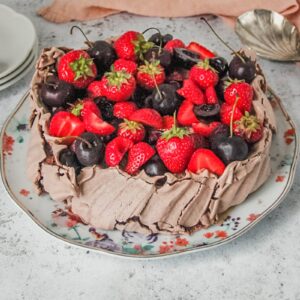
Chocolate Pavlova
Ingredients
Pavlova
- 114 grams / 3 large or 5 small egg whites room temperature
- 200 grams / 1 cup superfine/caster sugar
- 30 grams / 2 tablespoons boiling water
- 5 grams / 1 teaspoon vinegar
- 28 grams / ¼ cup cocoa powder sifted
Topping
- 227 grams / 1 cup heavy cream
- 14 grams / 2 tablespoons cocoa powder sifted
- 140 grams / 1 cup fresh strawberries
- 140 grams / 1 cup fresh cherries whole
Instructions
Chocolate Pavlova
- Preheat the oven to 140ºC/280F and line a baking tray with greaseproof paper.
- Place the sugar, boiling water, vinegar and egg whites in a clean bowl and beat on medium until the meringue is stiff and holds its shape when you pull the beater away, approximately 12 minutes with a hand beater.
- Add the cocoa powder and fold in carefully until combined.
- Spoon the meringue onto your greased tray and shape carefully into whichever pavlova shape you prefer with an offset spatula or the back of a spoon.
- Place in the oven and bake for 30 minutes before turning the temperature down to 120ºC/265F and bake for a further 45 minutes.
- Turn the oven off and allow to cool completely, minimum 2 hours before removing.
Topping
- Whip the cream until soft peaks form than gently fold in the cocoa powder.
- Spoon on top of your meringue and spread evenly.
- Take half of the cherries and strawberries and half, removing pits and scatter over the cream.
- Top the remaining whole fruit over the cream.
- Slice and serve immediately.
Notes
- Egg whites: Room temperature fresh egg whites are best for a great pavlova as they are less likely to collapse.
- Sugar: Superfine or caster sugar will dissolve easily in our meringue and add sweetness without additional flavor. You could replace with white sugar. Brown sugar also works here to create a complimentary flavor to the cocoa, though this hasn't been tested.
- Vinegar: Vinegar strengthens the egg white structure helping stabilize and ensure the there is no seepage.
- Boiling water: The boiling water helps raise the temperature in the egg white mixture which makes this meringue closest to a Swiss Meringue helping make our meringue denser in texture than a French meringue and less fussy than an Italian meringue.
- Only use room temperature egg whites: They absorb air more quickly to develop a nice and stable foam - though to really stabilize that foam we’ll need an acidic element (the vinegar we use here).
- Shaping your Pavlova: Simply stenciling the shape you want for your pavlova onto the underside of your baking paper will help give you an easy border to work with. And the back of a spoon or offset spatula will help you create your desired shape.
- Try not to overbeat your meringue: Over whipping egg whites can result in your meringue collapsing or weeping beads of sugar once baked. The best way to avoid over beating is to ensure you beat at a steady speed and allow at least 20-30 seconds of beating time for the sugar to dissolve between adding more. Try not to beat for longer than 15 minutes (this is around the break point, I’ve noticed). Unfortunately, you cannot repair over whipped meringue, though, dependent on how over whipped they are, you could make an egg white based recipe such as macaroon’s or even a baked Alaska.
Nutrition
Subscribe to receive a free weekly newsletter using seasonal produce as well as exclusive content!
Made it and loved it?
If you have made this recipe, it would mean so much to leave a review below to help more people find this.


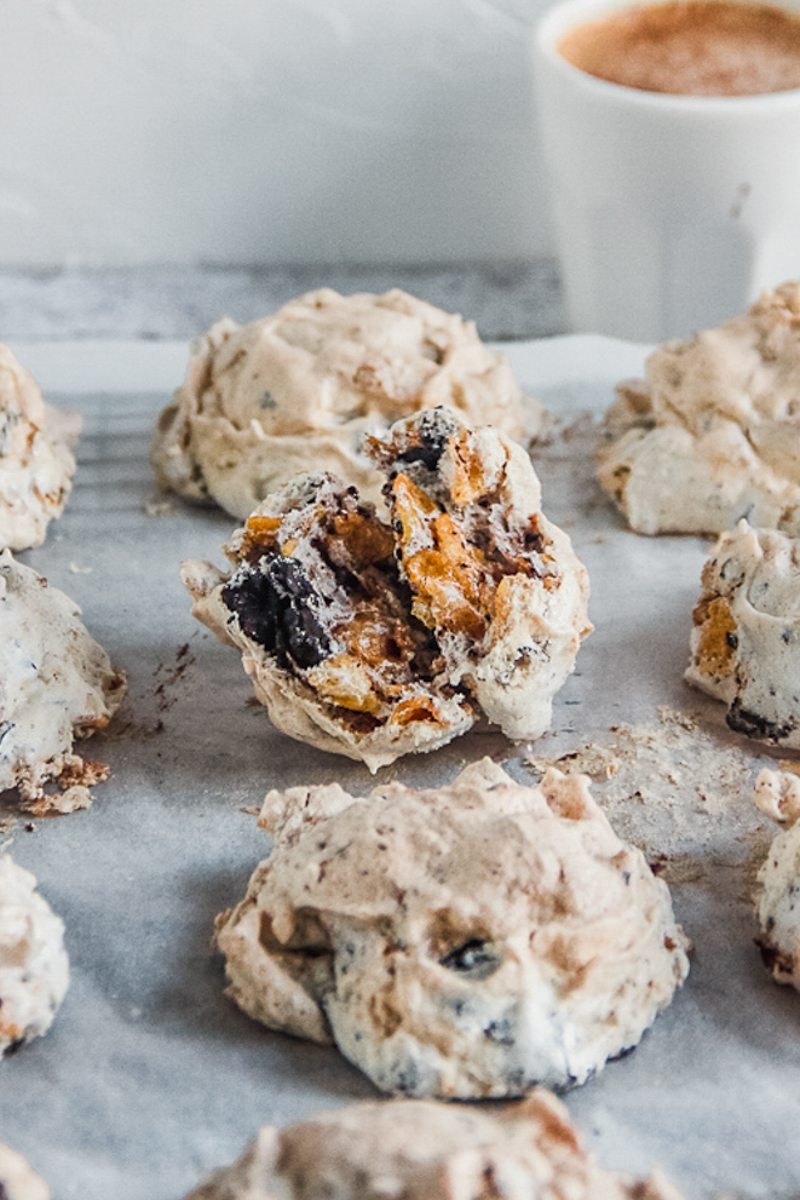
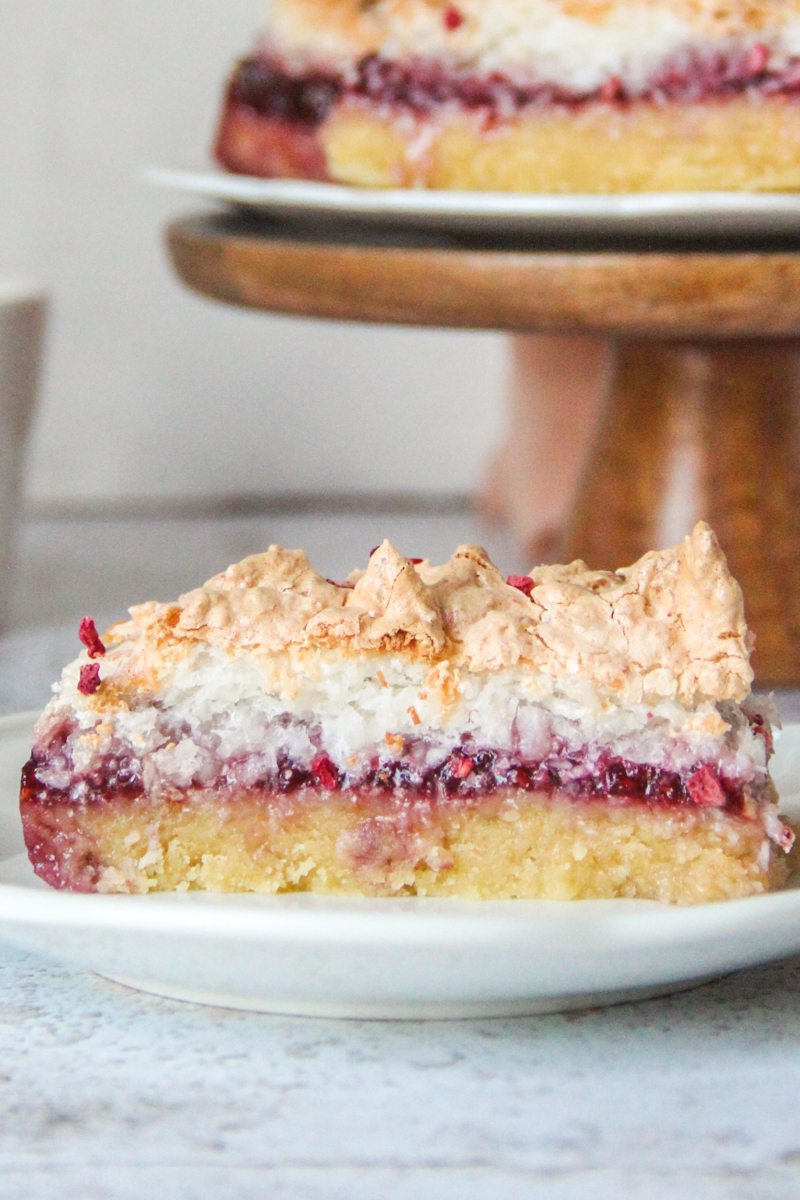

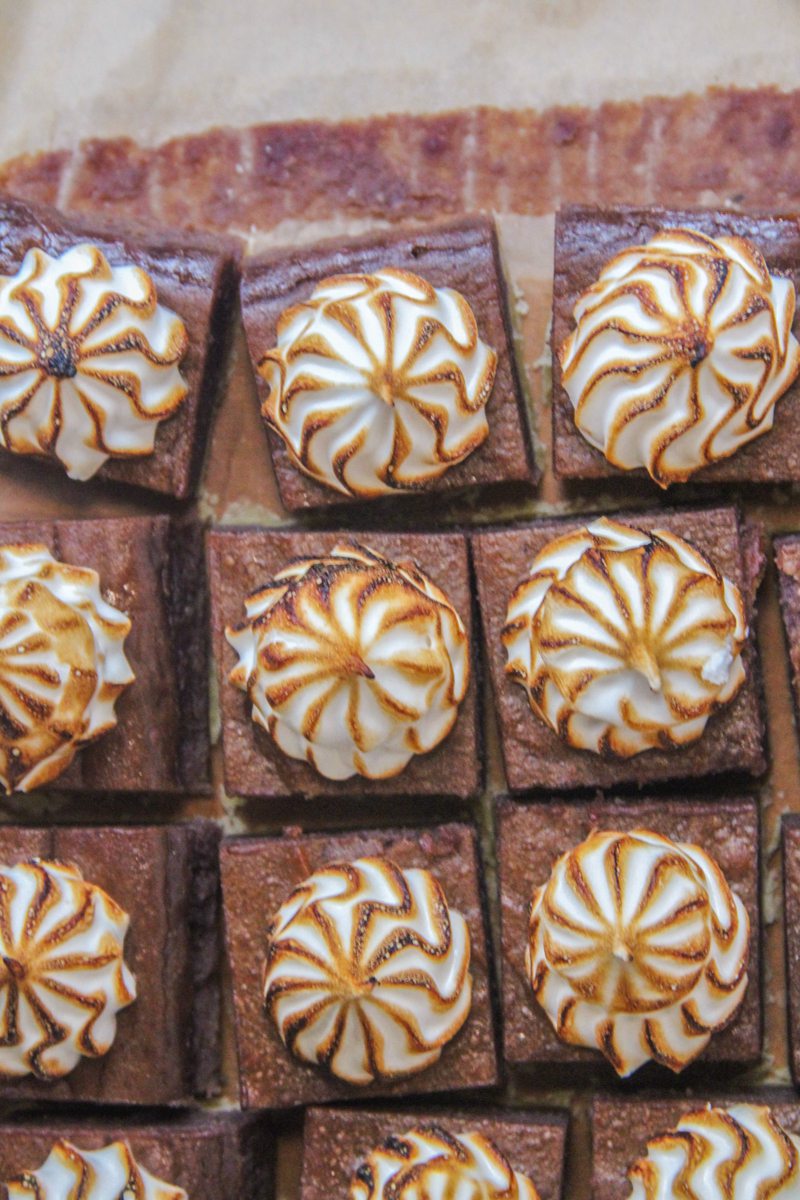
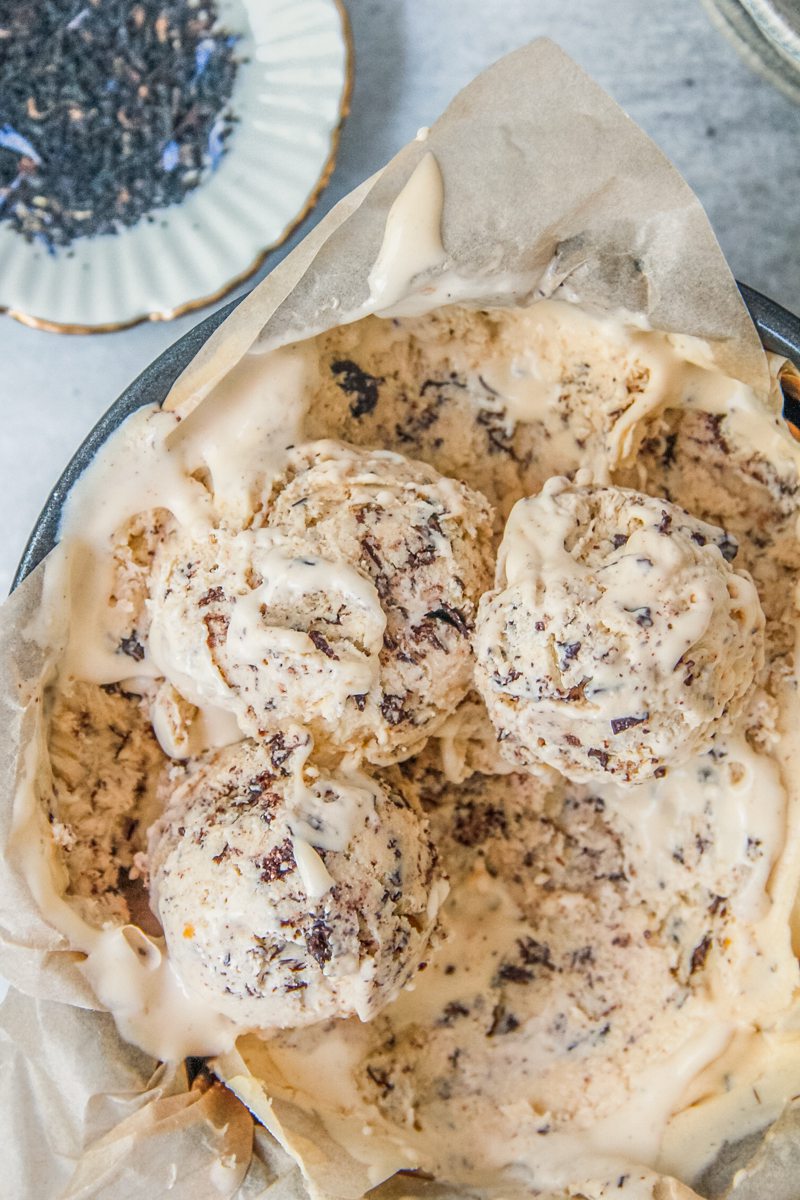
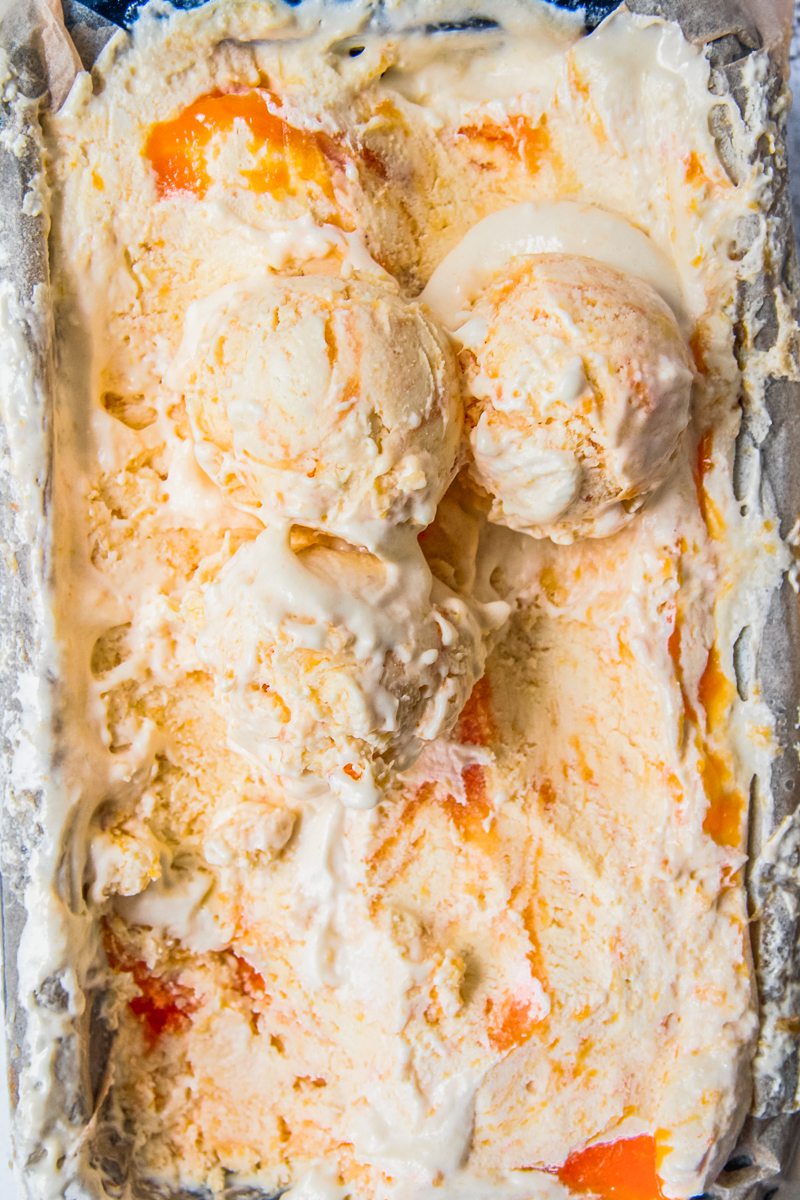
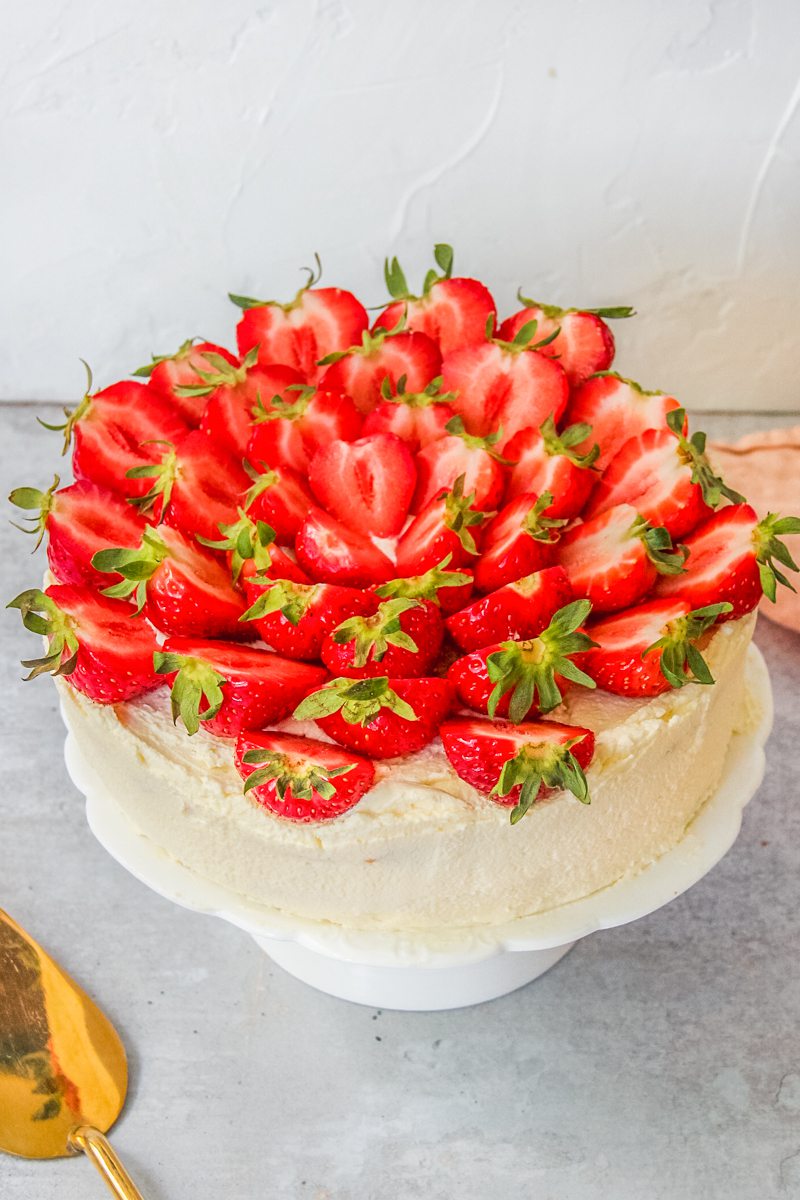
Leave a Reply